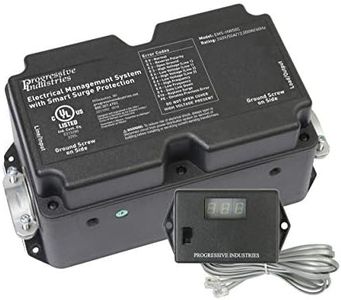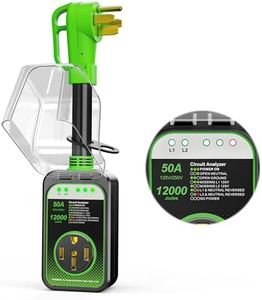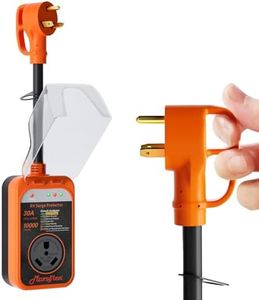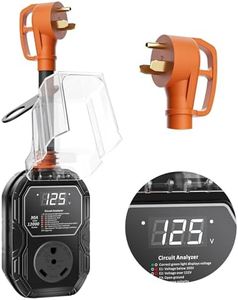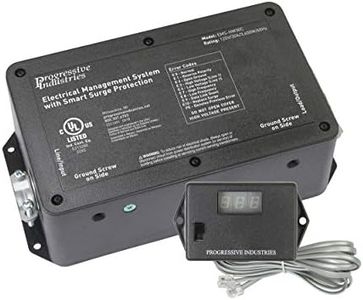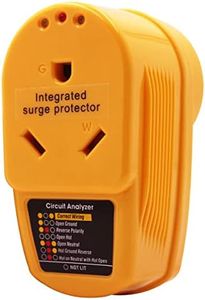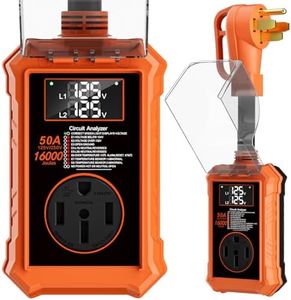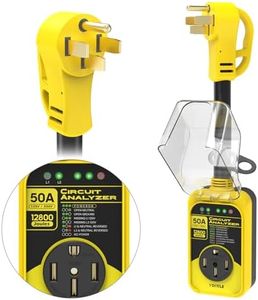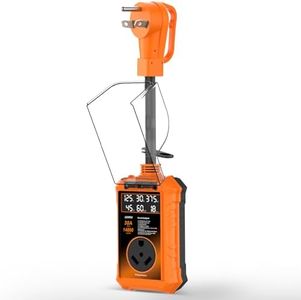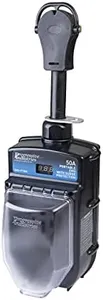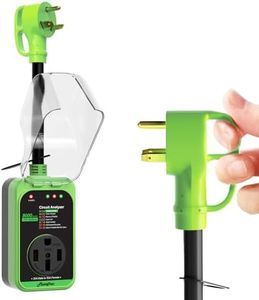We Use CookiesWe use cookies to enhance the security, performance,
functionality and for analytical and promotional activities. By continuing to browse this site you
are agreeing to our privacy policy
10 Best Rv Surge Protectors
From leading brands and best sellers available on the web.Buying Guide for the Best Rv Surge Protectors
When selecting an RV surge protector, it's important to remember that this device serves as the shield for your RV's electrical system, protecting it from voltage spikes, power surges, and wiring issues you might encounter at campgrounds. Choosing the right surge protector ensures that your sensitive electronics, appliances, and wiring stay safe from unpredictable power sources, which in turn gives you peace of mind while traveling. The buying process involves understanding your RV's power requirements and how much protection you need based on where and how you camp. Here are the key specifications you should consider when making your choice.Amp Rating (30A vs 50A)The amp rating refers to the amount of current the surge protector is designed to handle, most commonly 30 amps or 50 amps for RVs. It's crucial to match the surge protector's amp rating to your RV’s electrical system—using the wrong one may not provide proper protection or even fit your power connection. To decide which you need, check your RV’s power cord; if it has three prongs, it’s likely a 30 amp system, and if it has four prongs, it’s probably a 50 amp system. Always use a surge protector with the correct amp rating for your RV.
Surge Protection Rating (Joules)Surge protection rating, measured in joules, determines how much excess energy the unit can absorb before failing. The higher the joules, the better the device can handle larger or more frequent surges. Devices typically range from a few hundred to several thousand joules. For occasional campers in areas with stable power, a lower rating might be sufficient. Frequent travelers who visit a variety of campgrounds, especially older ones, will benefit from higher ratings for maximum protection.
Diagnostic FeaturesDiagnostic features let the surge protector detect and notify you of wiring problems, low or high voltage, or other electrical issues at the hookup. Some units have just a basic indicator light, while others have digital displays or more advanced error codes. Simpler models are easier to use if you just want to know if it’s safe to connect, whereas advanced diagnostics are helpful if you want detailed information to prevent problems before they damage your RV.
Portability vs HardwiredSurge protectors come in portable (plug-in) or hardwired versions. Portable units are easy to move from site to site and great for those who value convenience and flexibility, but can be stolen if left unattended. Hardwired units are installed inside the RV, providing security and protection against the elements, but require installation and are permanent. Choose a portable model if you value ease of use and flexibility, or opt for a hardwired surge protector if you want security and don’t want to set up protection each time you hook up.
Weather ResistanceSince surge protectors are often used outdoors at campsites, weather resistance is crucial to ensure durability and safe operation. Look for features like water-resistant housings and covers for the connections. If you expect to camp in rainy or harsh environments, opt for a model specifically designed to handle tough weather, ensuring it won’t fail when you need it most.
Response TimeResponse time is how quickly the surge protector reacts to power surges. A faster response time reduces the risk of even momentary damage to your electronics. While most modern units react within nanoseconds to microseconds, double-checking this spec can give extra peace of mind if you use particularly sensitive equipment in your RV. Generally, faster is always better, but any surge protector will be an improvement over having none.
